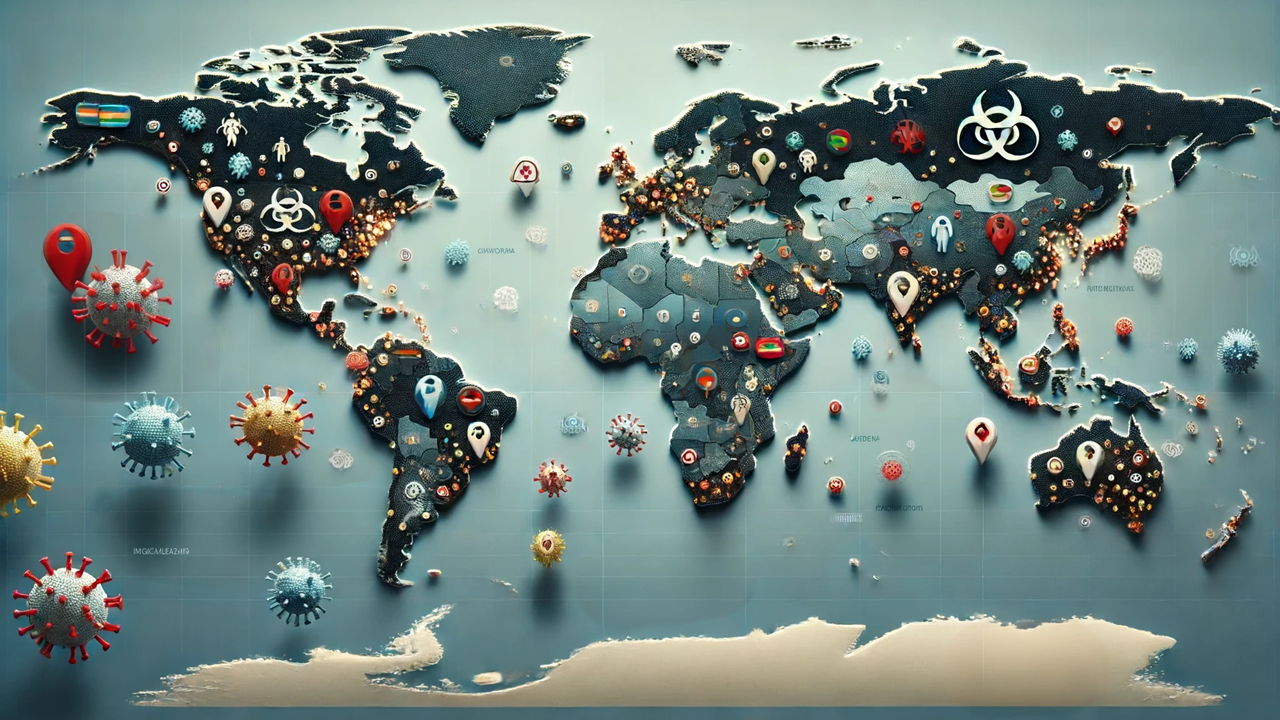Global Respiratory Virus Surge: Flu and COVID-19 Trends You Need to Know
The World Health Organization's latest "Global Respiratory Virus Activity Weekly Update" highlights significant influenza and SARS-CoV-2 trends. The report reveals elevated influenza activity in several regions, particularly due to influenza A(H3N2) viruses, while SARS-CoV-2 remains low overall but shows pockets of increased activity in some areas. The comprehensive analysis emphasizes the importance of ongoing surveillance and reporting.

The World Health Organization (WHO) has recently published its "Global Respiratory Virus Activity Weekly Update," offering a thorough overview of the current trends in influenza and SARS-CoV-2 as of June 2, 2024. This report, compiled from sentinel surveillance data submitted to RespiMart, sheds light on virus activity across different regions, emphasizing both persistent and emerging patterns.
Influenza: A Tale of Two Hemispheres
The WHO report reveals a stark contrast in influenza activity between the Northern and Southern Hemispheres. In the Northern Hemisphere, influenza activity remains high in Central America, the Caribbean, and South Asia, primarily driven by influenza A(H3N2) viruses. Conversely, most temperate countries are experiencing low influenza levels, characteristic of the interepidemic period.
The situation in the Southern Hemisphere, however, tells a different story. South America is dealing with significant influenza activity, again mainly due to A(H3N2) viruses. In South Africa, the A(H1N1)pdm09 virus is the predominant strain, while in Oceania, both A(H1N1)pdm09 and A(H3N2) viruses are co-circulating, resulting in elevated influenza activity. These regional differences highlight the importance of localized surveillance to tailor public health responses effectively.
SARS-CoV-2: Low Overall, But With Regional Surges
While the global activity of SARS-CoV-2 remains relatively low, the WHO report notes elevated levels in certain regions. Countries in South West Europe, Western Asia, South Asia, South East Asia, and Oceania have reported higher SARS-CoV-2 activity. Notably, small increases have been observed in South West Europe and South Asia, indicating the need for continued vigilance and readiness to address potential surges.
The report underscores the crucial role of sentinel surveillance in monitoring these trends. By focusing on respiratory specimens tested for both influenza and SARS-CoV-2, the WHO can provide a clear and timely picture of virus activity. This data, smoothed over three weeks for accuracy, helps public health officials make informed decisions and allocate resources where they are most needed.
Regional Reports: A Closer Look
For those interested in more detailed regional insights, the WHO offers access to the latest surveillance reports for various regions, including the African Region, the Region of the Americas, the Eastern Mediterranean Region, the European Region, the South-East Asia Region, and the Western Pacific Region. Each report provides a closer examination of the specific dynamics of respiratory virus activity in these areas, offering valuable context for understanding global trends.
The WHO's Global Influenza Surveillance and Response System (GISRS) is a vital resource in this endeavor. GISRS facilitates the sharing of data and collaboration among countries, ensuring that public health responses are informed by the most current and comprehensive information available.
Staying Informed and Prepared
As the world continues to navigate the challenges posed by respiratory viruses, the importance of ongoing surveillance and reporting cannot be overstated. The WHO's latest update serves as a reminder of the dynamic nature of virus activity and the necessity for global cooperation to manage and mitigate the impacts of these diseases.
For further information and the latest updates, readers are encouraged to visit the WHO's Global Influenza Programme and COVID-19 dashboard. These resources provide real-time data and analysis, helping individuals and public health officials stay informed and prepared.
- READ MORE ON:
- WHO
- influenza
- SARS-CoV-2
- respiratory viruses
- global health
- virus surveillance
- FIRST PUBLISHED IN:
- Devdiscourse
ALSO READ
Avian Influenza Outbreak: Duck Farm Near Melbourne Hits Quarantine Zone
Mortal remains of three students who drowned in Russia reach Mumbai airport
Tiger Shroff, Ananya Panday, Vidya Balan; check out who all attended Kartik Aaryan's 'Chandu Champion' screening
Mortal remains of three Indian students who drowned in Russia reach Mumbai airport
IAF flight carrying mortal remains of Indians who died in Kuwait fire incident lands at Cochin International airport.










